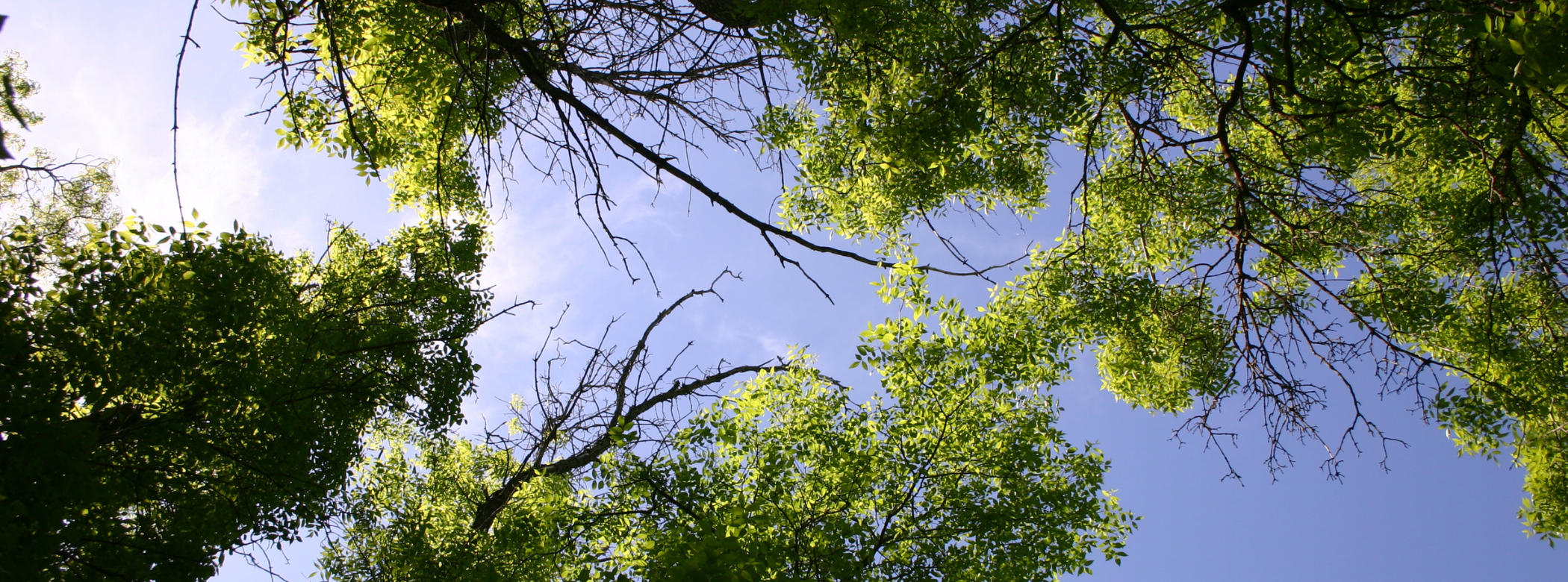Posted on: Thursday April 9, 2020
Canada’s trees have developed some resistance to native diseases and insect pests. However, climate change has been facilitating more forest damage. For example, the native Mountain Pine Beetle (Dendroctonus ponderosae) used to be held in check because it was killed by extremely cold winter temperatures, which occur less frequently now than they used to. Additionally, in the last 125 years, the importation of live trees and untreated wood from other continents has brought in many pests that now threaten not just urban trees, but the integrity and survival of our wild forests as we know them. Likewise, the accidental importation of North American diseases and pests, such as the Pinewood Nematode (Bursaphelenchus xylophilus), threatens forests on other continents. The stories of just three threatened Canadian tree species are recounted below.
American Chestnut
(Castanea dentata)
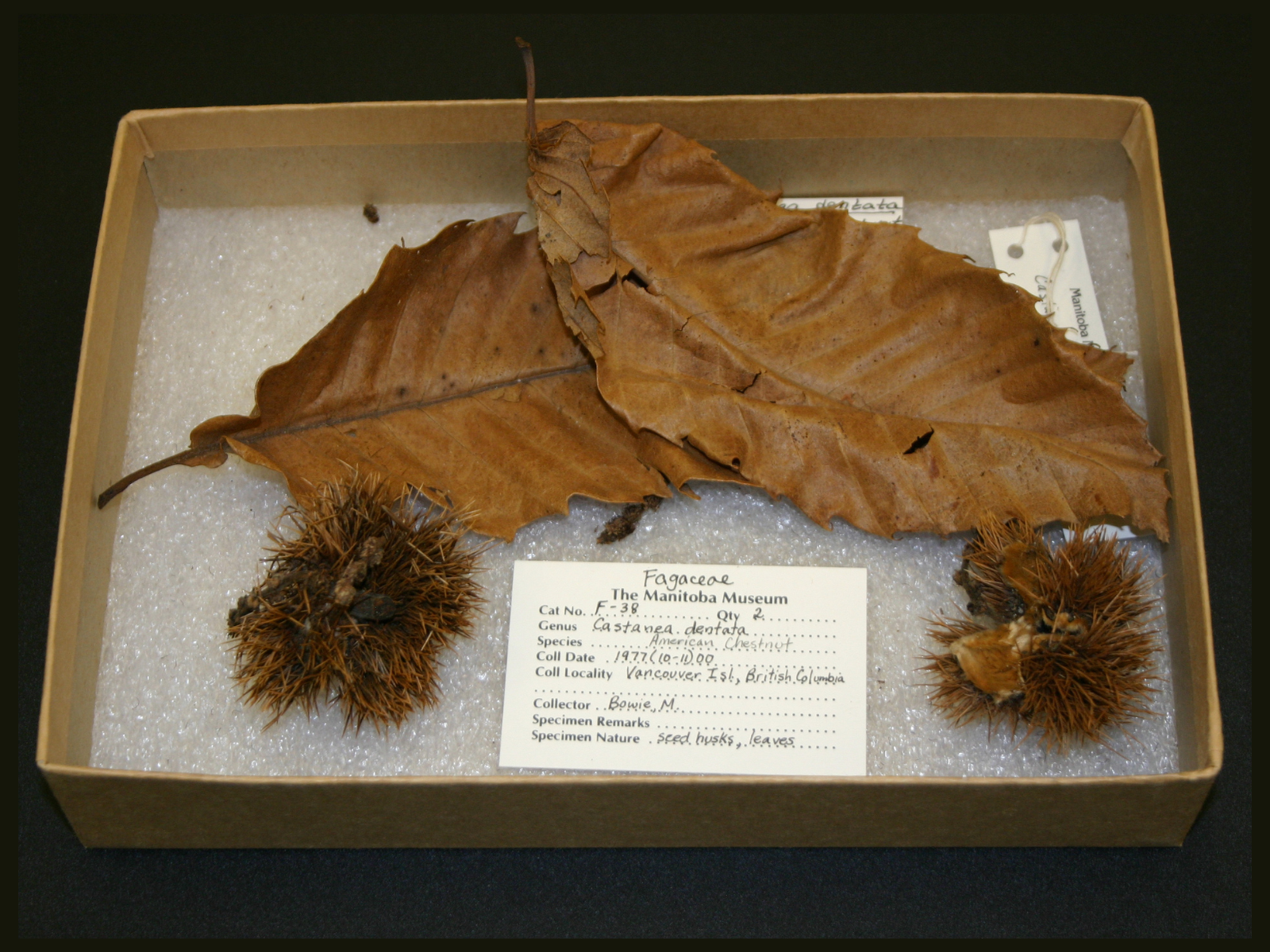
In the hardwood forests of eastern Canada and the United States, massive 35-m tall American Chestnut trees once grew. They were an excellent source of timber and produced edible nuts enjoyed by both people and wildlife. In some areas it was estimated that one of every four trees was a chestnut. Then, in 1904, the New York Zoo brought in livestock of Japanese Chestnut (Castanea crenata) trees that were infected with the fungus known as Chestnut Blight (Cryphonectria parasitica). This fungus damages the cells that transport water and sugar through the trees, eventually causing them to starve to death. The spectacular American Chestnuts had no natural resistance, unlike Asian chestnuts, and the disease quickly spread. By the 1940’s, four billion chestnut trees were dead, and their niches became occupied by other trees such as maples (Acer spp.) and oaks (Quercus spp.). American Chestnut still survives as a shrub sprouting from old roots but eventually all individuals succumb to the disease. In Canada, it is endangered and protected by the Species-at-Risk Act, 2002. However, there may be a way to bring this species back using modern technology: trees that appear to be blight-resistant have been bred by inserting a novel gene from wheat.
American Chestnut leaves and fruits from the Manitoba Museum’s collection. MM F-38.
American Elm
(Ulmus americana)
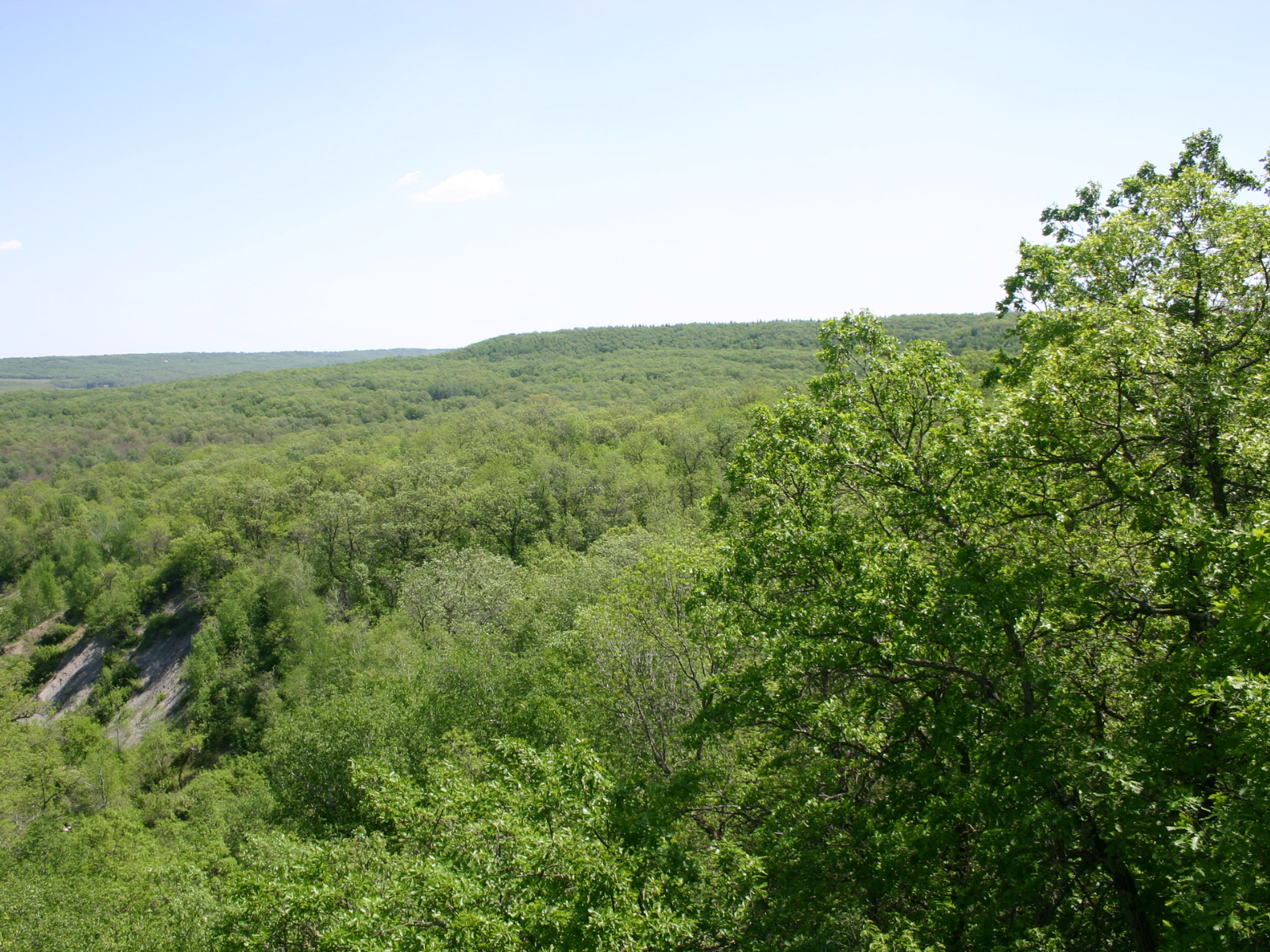
The beautiful fan-shaped American Elm tree became one of the most popular urban trees in North America; in the city of Winnipeg alone, there are more than a quarter of a million. These trees are also common in the wild, growing in hardwood and mixedwood forests along with poplars (Populus spp.), ashes (Fraxinus spp.), Manitoba maples (Acer negundo) and spruces (Picea spp.). In 1928 elm wood containing spores of Dutch Elm Disease (DED) (Ophiostoma novo-ulmi), a type of fungus, arrived in untreated wood destined for the furniture industry in Ohio. The fungus was spread by both native and introduced bark beetles, which tunnel under the bark of elm trees. By 1989, the fungus had destroyed 75% of all North American urban trees. DED reached Manitoba in 1975 but summer pruning bans, prompt removal of infected trees, prohibition of elm firewood transportation and treatment with pesticides and a vaccine helped Winnipeg protect its trees. Winnipeg is now the home of the largest surviving urban elm forest. However, unless these efforts are sustained, losses will mount and more trees will die.
The beautiful Pembina Valley is full of wild American Elm and ash trees.
Ash
(Fraxinus spp.)
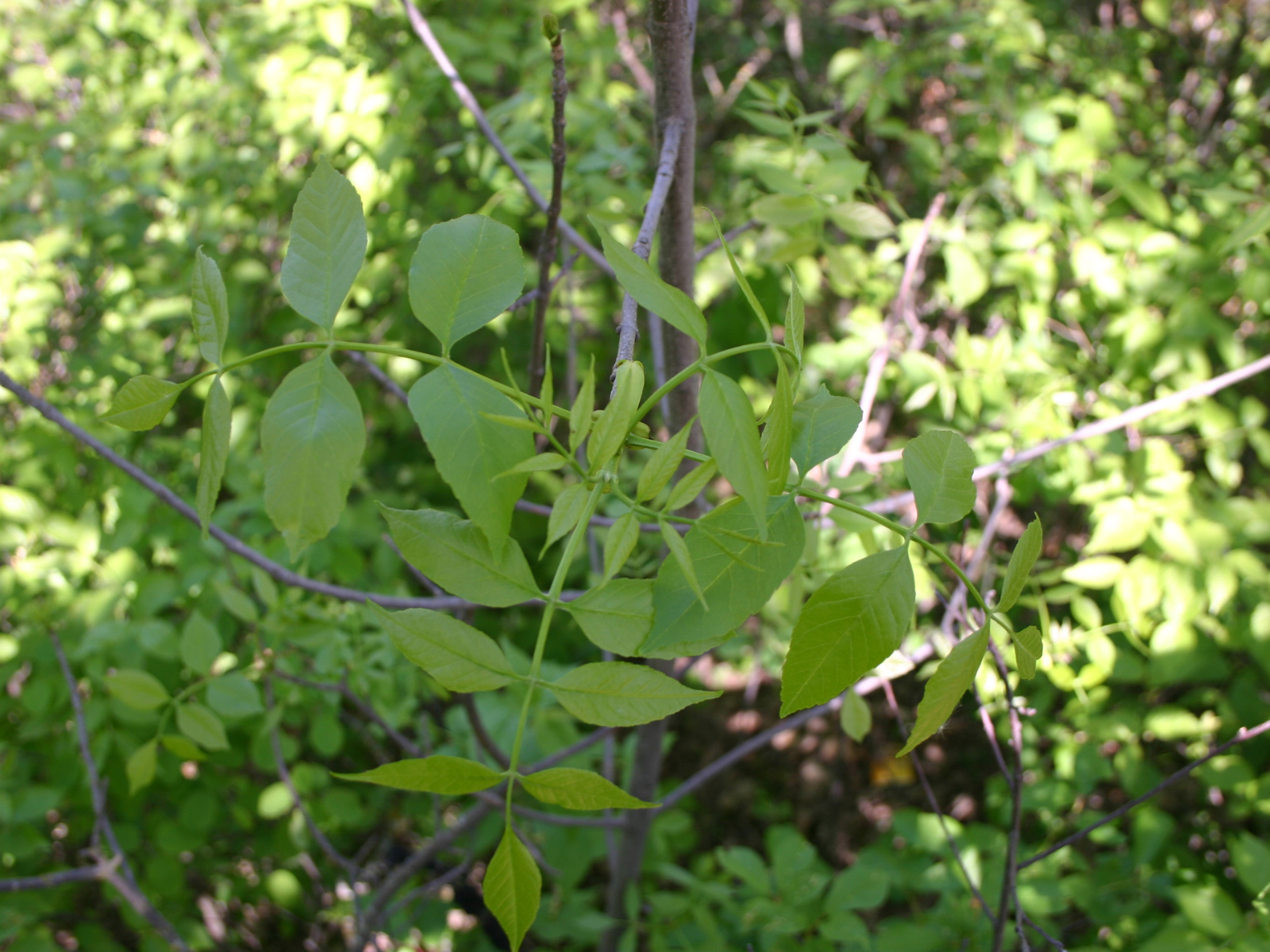
As DED began decimating North America’s elms, many communities began planting Green (Fraxinus pennsylvanica) and Black Ash (F. nigra) instead. However, these species are now threatened (Black ash was place on Canada’s endangered species list in 2018) due to the accidental importation of pests from other continents in untreated wood products (sound familiar?). The Emerald Ash Borer (Agrilus planipennis) arrived in Michigan from Asia in the early 1990’s, and was first sighted in Manitoba in 2017. This beetle feeds on the inner bark of a tree, eventually strangling it. Another pest, the Cottony Ash Psyllid (Psyllopsis discrepans), a type of jumping tree louse, was introduced from Europe, arriving in Winnipeg in 2017. The Psyllid damages the leaves of ash trees rather than the bark. This double whammy of pests will likely kill most of Winnipeg’s ash trees in the next decade and forever alter our wild ash forests. The negative impact on wildlife that rely on ash trees for food and shelter will be huge. Fortunately, some individual trees appear to be more resistant to the Emerald Ash Borer, and can help us breed insect-resistant stock.
Manitoba’s Green Ash is being decimated by the introduced Emerald Ash Borer.
How to Save a (Trees’) Life
There are many things we can do to help protect our trees.
1. Slow the Spread
Follow all biosafety protocols regarding importation of any plant or plant product. Buying locally grown trees and nursery plants, and locally produced wood mulch rather than imported products is the safest option. Consider buying and refinishing antique furniture, and using reclaimed or recycled wood for woodworking and construction projects instead of new wood. To be safe, don’t transport ANY firewood; burn local wood only.
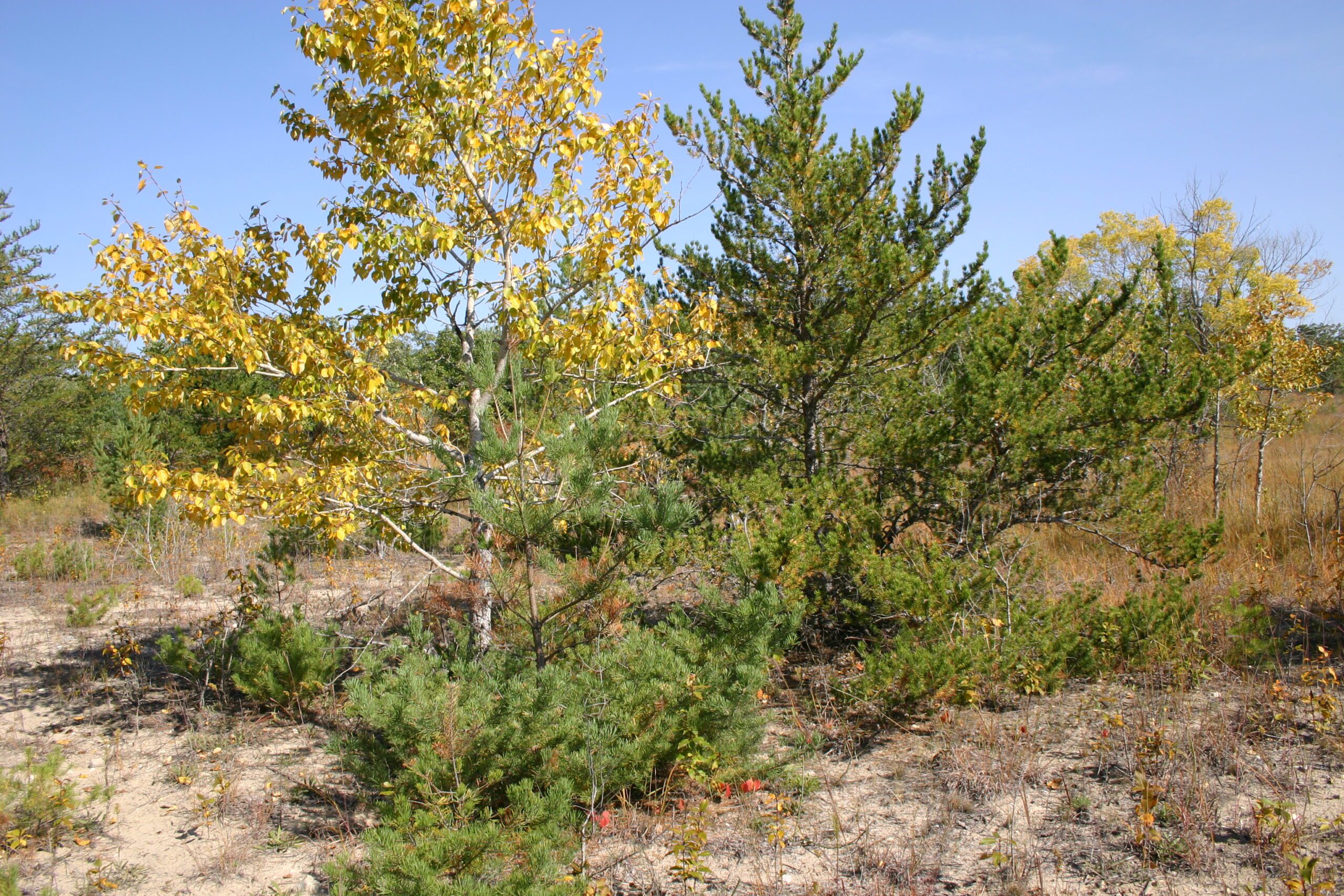
2. Reduce the density
Planting monocultures of the same species may look nice (I love those green elm tree “tunnels” as much as the next person), but it is a recipe for disaster. Planting a greater diversity of tree species lets them “socially distance” from one another, reducing the likelihood of disease transmission and catastrophic tree losses within a short period of time. If you lose a tree in your yard, replace it with a different species than the ones surrounding it.
Image: Planting more poplar (Populus spp.) (left) and pine (Pinus spp.) (right) trees will increase the diversity of our urban forests.
3. Improve tree health
Remember to prune trees properly when they need it, adhering to any relevant pruning bans. If you don’t know what you’re doing, contact a professional arborist (tree doctor) for help. Regular watering of young or vulnerable trees, and banding trees to reduce cankerworm infestations will also help your trees stay healthy.
4. Support scientific research
Scientific research that was started 43-years ago at an arboretum at Penn State may hold the key to saving ash trees as some appear to have natural resistance and can be used for breeding resistant stock. In Canada, the University of Guelph has been leading a breeding program for DED-resistant American Elm trees. The National Tree Seed Centre in Fredericton, New Brunswick stores seeds of Canada’s native trees, which can be used to breed resistant plants. In fact, the public is being encouraged to collect and send them wild ash seeds for their seed bank. But public support for research that doesn’t appear to offer any immediate benefit, is not always forthcoming. Real life is not like a Hollywood movie; scientists can’t conjure up cures to diseases overnight. It takes years of research to come up with solutions to new problems. Let your political representatives know you support publicly-funded science.
Trees provide us with so much-oxygen, shade, beauty, wildlife to admire and even food-that we need to give something back. You can report sick trees in Winnipeg by calling 311, the Canadian Food Inspection Agency or the Emerald Ash Borer hotline at 1-866-463-6017. If you lost a tree to disease or the tree-pocalypse storm in October 2019, consider planting a new one as soon as you can. Many Winnipeg greenhouses will even deliver plants right to your door this year. If you would like to see a tree planted on a city-owned boulevard or park, you can ask the city of Winnipeg to plant one. Remember the best time to plant a tree was 20 years ago. The second-best time is now. Enjoy your neighborhood trees this spring!




